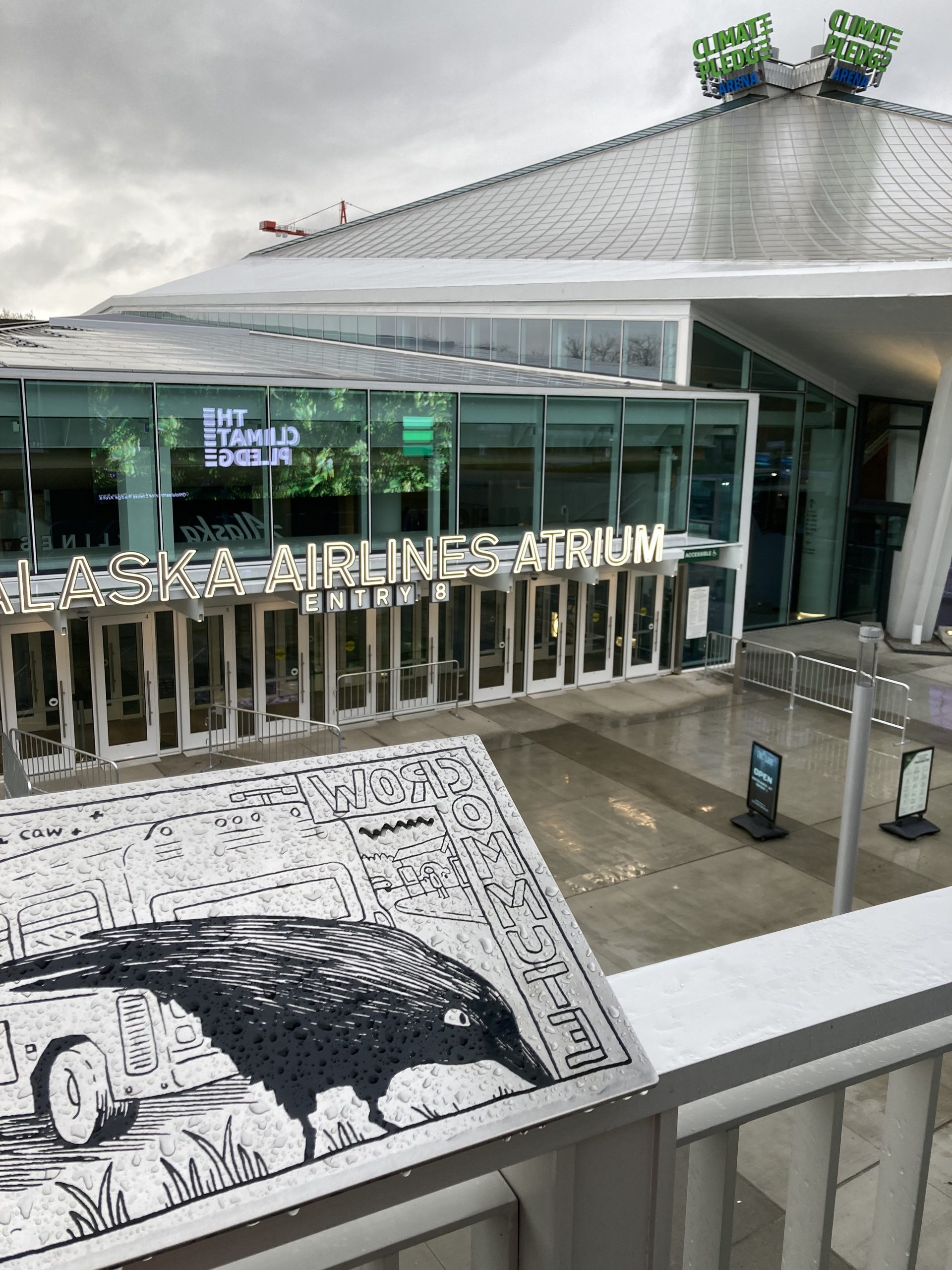
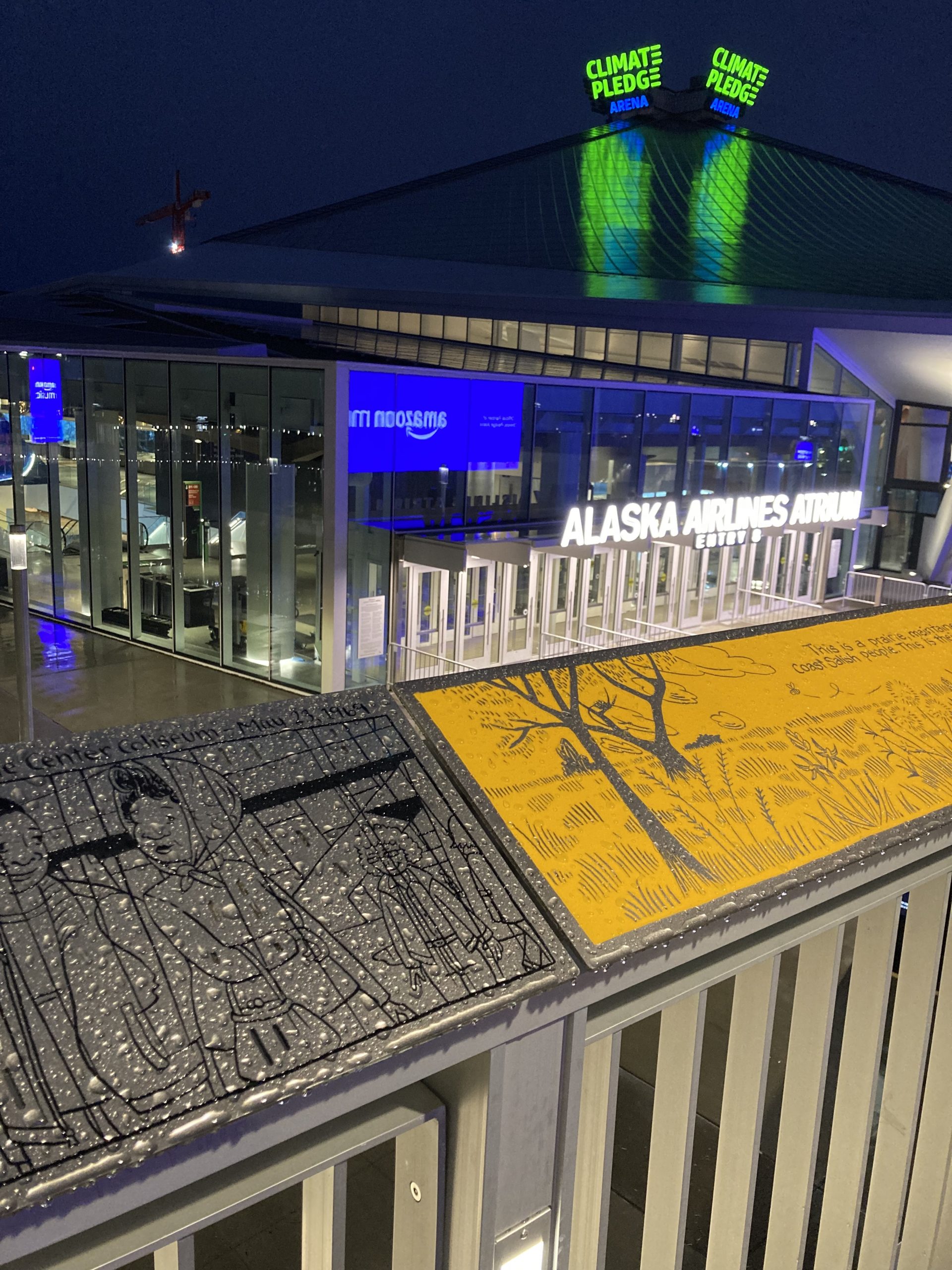
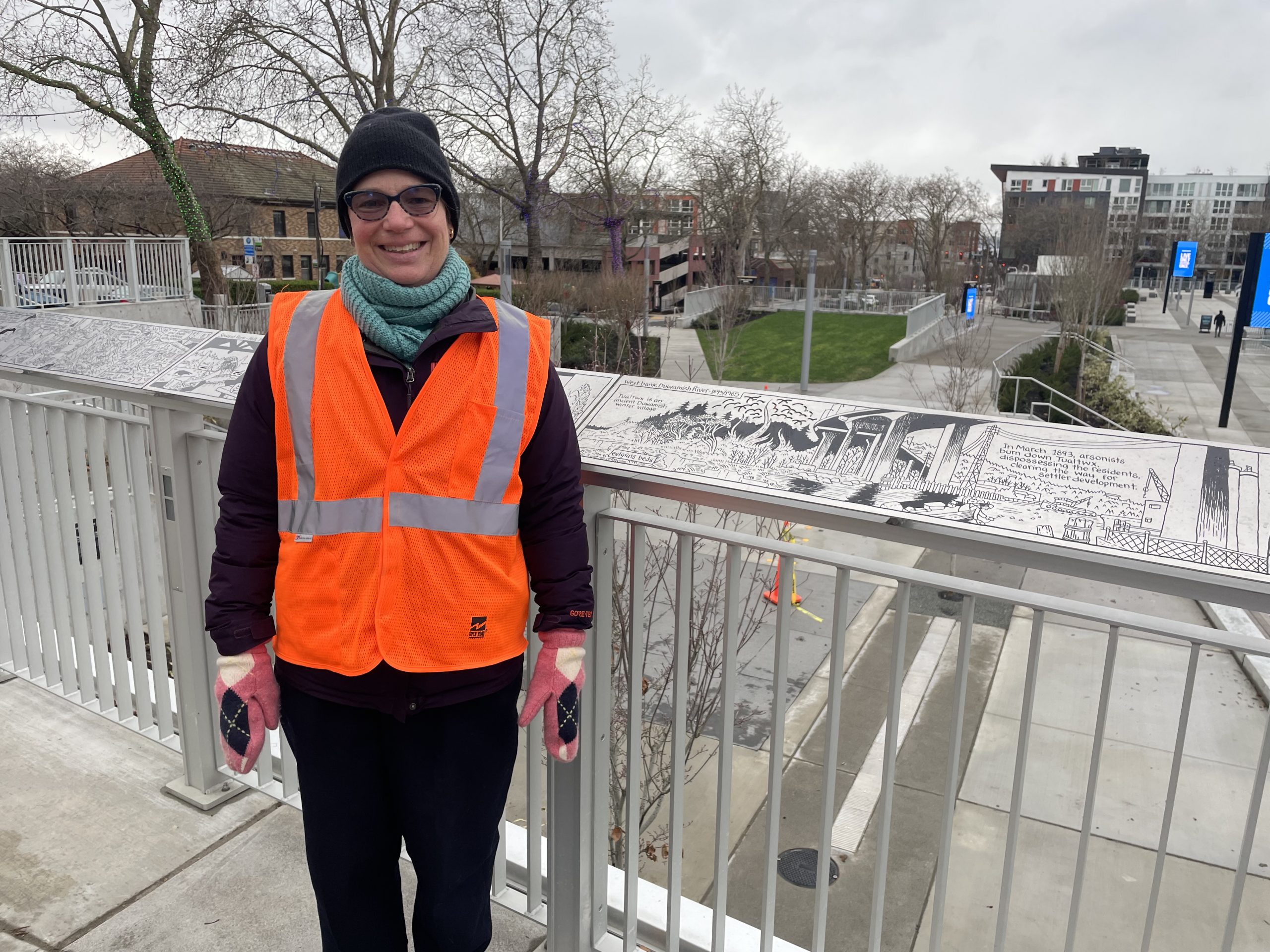
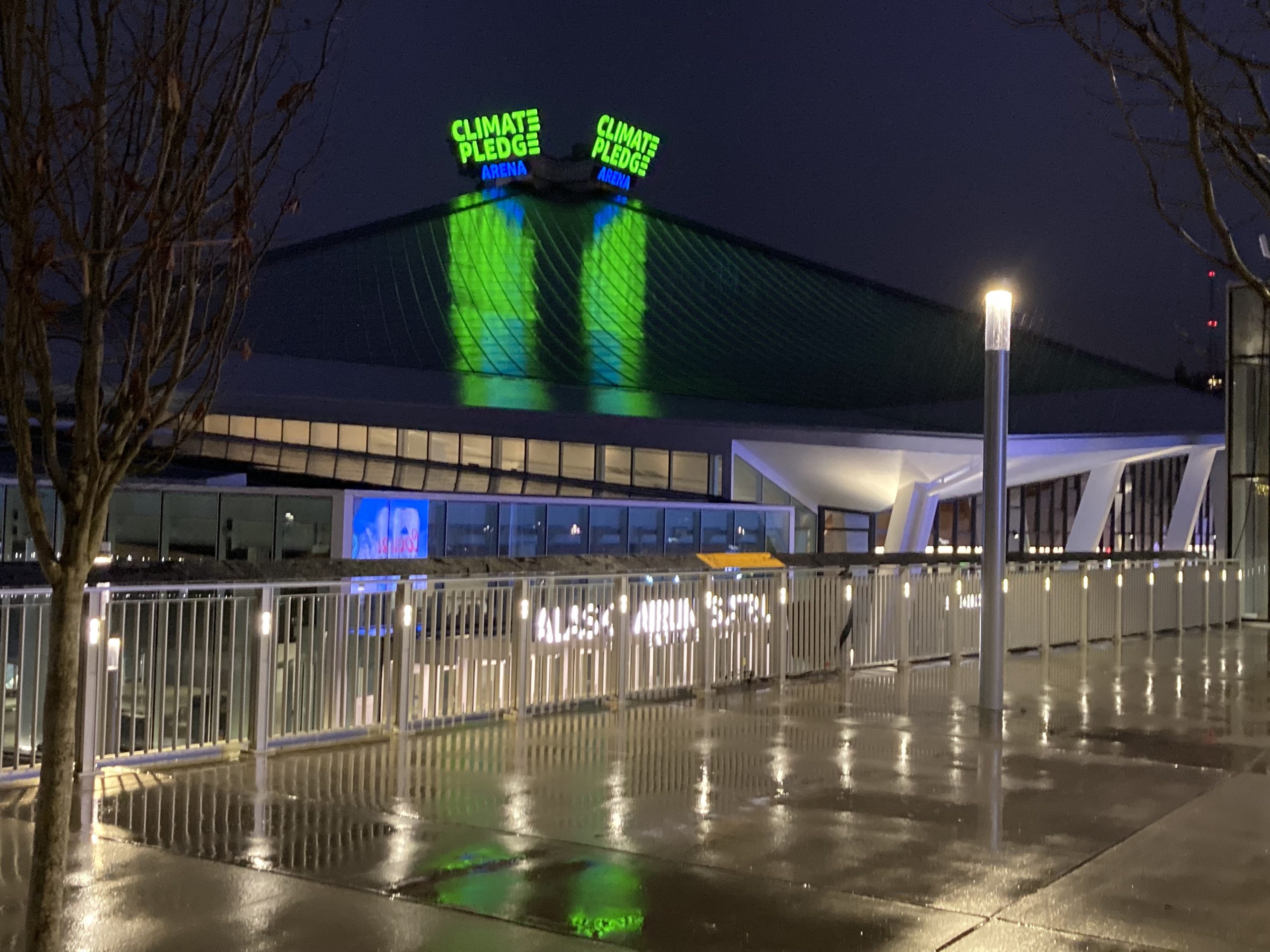
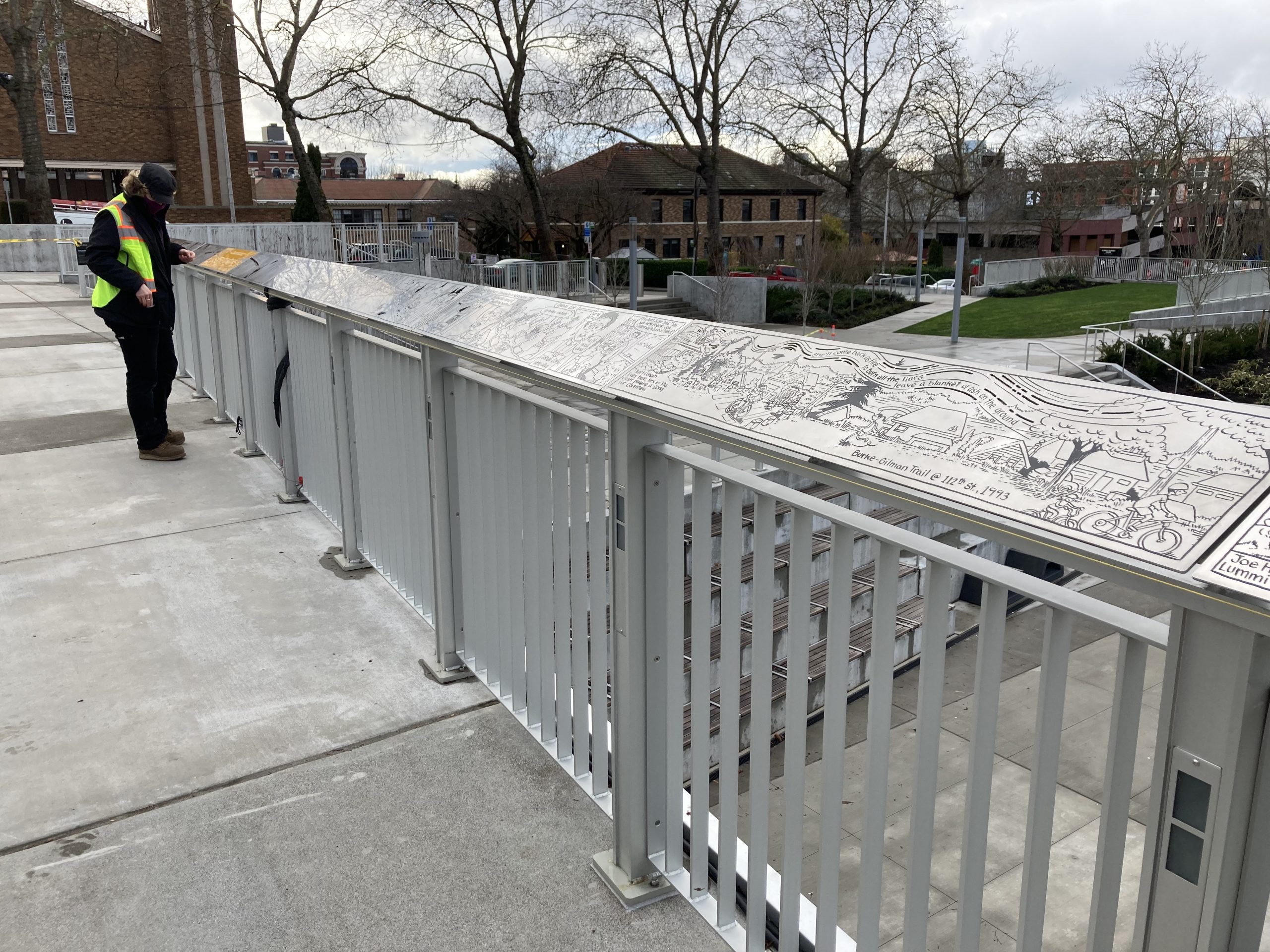

Client: Oak View Group and the Seattle Kraken
Location: Seattle, WA, United States
Completion date: 2021
Artwork budget: $80,000
Project Team
story about Carolyn Downs
Trena Harris
story about Robert Eaglestaff and Indian Heritage High School
Sarah Sense Wilson
story about Liq'ted, a sacred indigenous spring in Seattle
Sabeqwa De Los Angeles
story about Vi Hilbert and Lushootseed language consultation
Jill LaPointe
Lushootseed Research
story about Liq’ted, a sacred indigenous spring in Seattle
Matt Remle
story about Othello Park neighborhood cleanup
Ron Momoda
Art Plan design and management
Laura Haddad
Haddad Drugan llc
etched, paint filled panel fabricator
Toby Poulson
Master Cut
railing design/bracket design
Gareth Loveridge
Swift Company
consultation on indigenous stories
Ruby Stacey
Pyramid Communications
bracket attachment design/final installation
Erika Baer
Turner Exhibits, Inc.
Overview
Crow Commute is an 85 foot long portrait of Seattle made up of drawings etched on stainless steel panels. It comprises a series of 21 panels and has three basic building blocks: comic strips, vignettes and vistas. The comic strips tell specific stories about people who have shaped Seattle, with a focus on BIPOC who have been underrepresented in histories of the city. Crow Commute begins in the middle, at panel 11, which sites the viewer on the land of Climate Pledge Arena in pre-colonial times when this place, a prairie, was maintained with fire by the Coast Salish people. From there, Crow Commute jumps in time to 1969, when Jimi Hendrix played at the Arena. The mural spreads into north and south Seattle, moving forward through time, with vignettes and vistas from neighborhoods all through the city, following the path that Seattle crows take on their daily commute from where they roost to where they forage for food. Each panel is four feet long and ten inches high. The drawings are chemical etched and then filled with black paint. The work is modular, so each panel can be enjoyed on its own, but together they form a “walk” across Seattle that centers the continuous presence of the first people on their ancestral land.
Goals
The clients wanted the artwork to reflect a sense of place, Seattle and the Pacific Northwest, but also the historical nature of Seattle Center, which is the site of the 1962 Worlds Fair. Crow Commute was more integrated into the landscape design of the plaza around Climate Pledge Arena than some of the other artworks because it was always intended as an architectural element, to be mounted on guard rails that were part of the plaza design. The working name for Crow Commute was "Memory Rails" because Laura Haddad always had in mind that a cartoonist like myself, or a graphic artist/illustrator would be perfect for the commission - somebody who could create drawings that would tell the story of the place. While I tackle portraying the entire city, Seattle Center is in many ways the heart of Seattle, which I communicated by having it be the exact center of the piece.
Process
Laura Haddad designed the art plan for the outdoor plaza of Climate Pledge Arena before all the artists were commissioned. She selected a number of sites in the plaza with lengths of guardrail that could accommodate a mural-like series of panels that could be mounted on the guardrails. Once I chose the site I wanted, I worked with Laura and Gareth Loveridge, a landscape architect from Swift Company (designers of the plaza) to come up with the dimensions of the panels and the overall length of the work. Gareth designed an attachment bracket that worked with the selected railings. The brackets were fabricated locally by Turner Exhibits and the panels were fabricated in Brisbane, Australia by Master Cut. I presented my preliminary idea to the Art Committee that Laura convened, which they approved. Then, months later, I shared my draft of all the drawings for the panels with them for their review. The committee offered feedback, and later, per the committee's recommendation, I met with an indigenous communications consultant, Ruby Stacey, to go over the panels that showed native people and she offered me insights, with a focus on centering the voices of the first people of the Pacific Northwest, while not shying away from my own artistic perspective as a descendant of colonizers.
Additional Information
The comic strips in Crow Commute play a special role in the piece. Dispersed throughout the 85 feet, they tell stories about real people who have shaped Seattle. Examples are, a strip about Carolyn Downs who was a Black Panther and a founder of the Black Panther free community health clinic that is still in operation today, which has been renamed in her honor. Another strip is about Vi taqʷšəblu Hilbert, a pioneer in the reclamation of the Lushootseed language, which is the indigenous language of the Coast Salish people who first lived in the Puget Sound area. Another is about a Japanese American man who worked for decades to make the park near his house safer for his neighbors. I interviewed people in my community and also the descendants of some of the subjects of these comic strips. When I had a draft ready, I showed the strips to the people represented, or their descendants, to get their feedback and approval. They all had suggestions of ways to make the stories better and truer. The vignette panels are "people watching" street scenes - what you would come across if you walked the length of the city. The vistas are wide landscape drawings that take up an entire panel. These were the result of almost a year I spent sketching throughout the city.